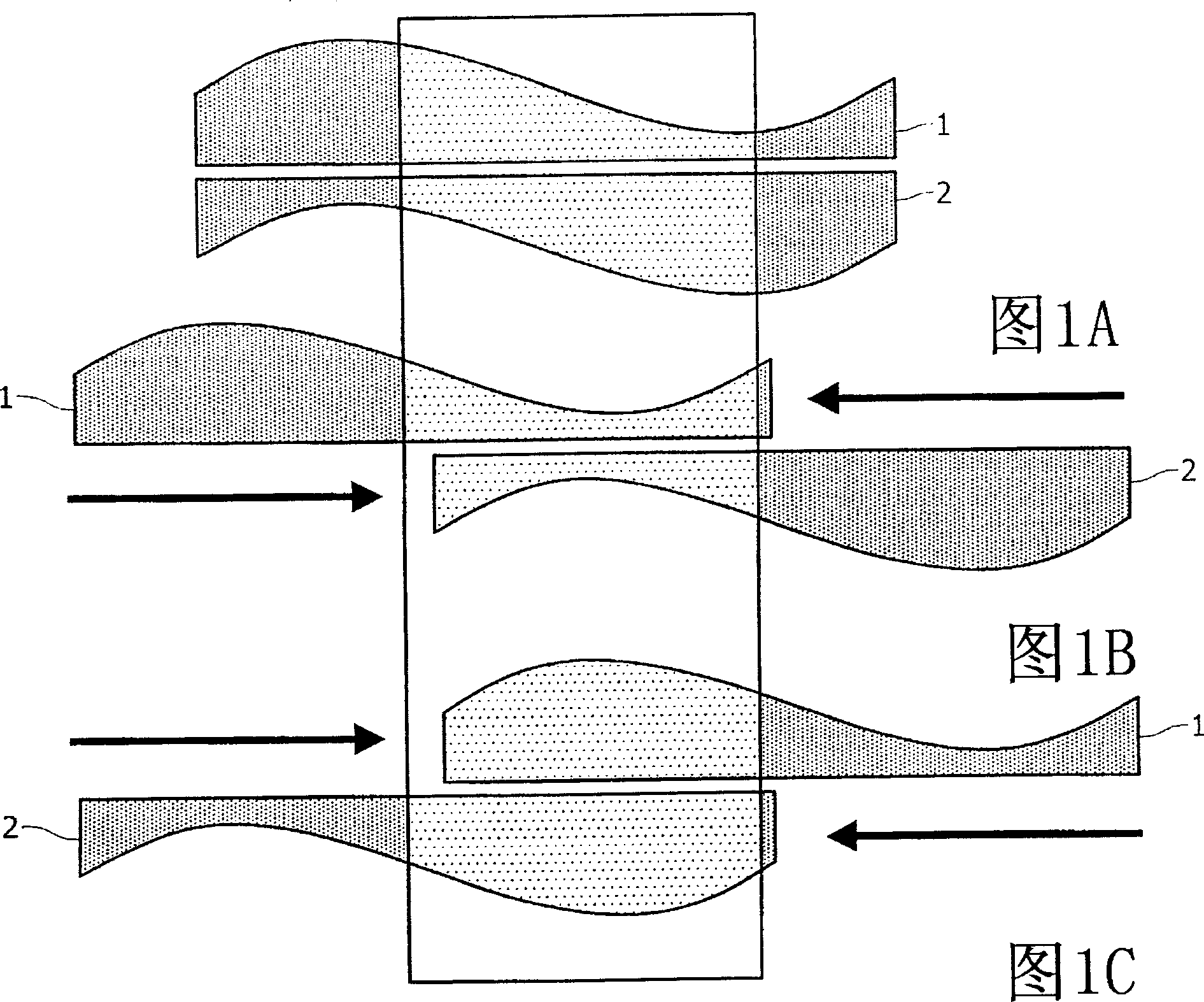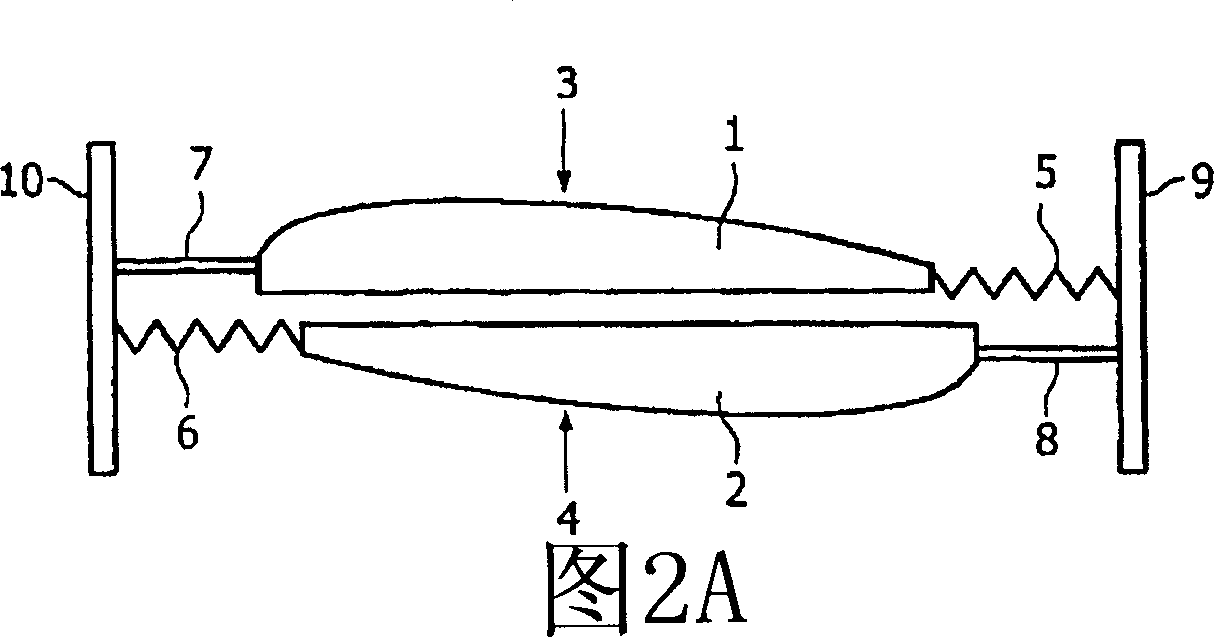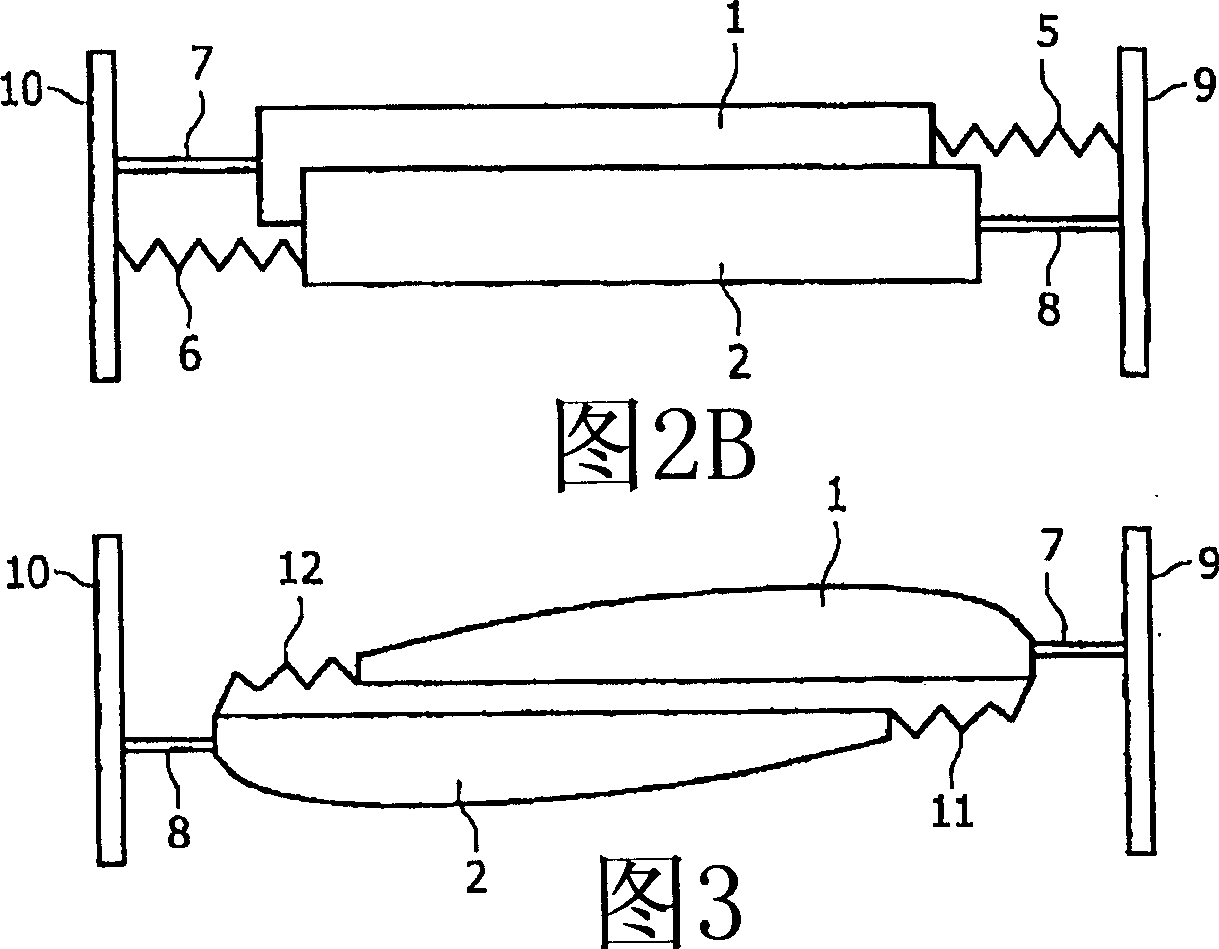Two optical elements which, in combination, form a lens of variable optical power for application as an intraocular lens
A technology of optical components and focal power, applied in the field of lens, can solve the problem of losing the natural adjustment function of the eyes, and achieve the effect of changing the optical characteristics
- Summary
- Abstract
- Description
- Claims
- Application Information
AI Technical Summary
Problems solved by technology
Method used
Image
Examples
Embodiment Construction
[0023] First, the principles on which these inventions are based will be explained. Figure 1 shows two optical elements 1, 2 with specific optical surfaces 3, 4 that can be moved laterally, which results in a variable optical power over the central area where the optical elements 1, 2 overlap. lens. This principle is described in US-A-3 305 294.
[0024] This lens effect is achieved by "saddle" surfaces 3, 4 on one or both sides of the optical elements 1, 2, which is a well-known principle. However, it is also possible to use diffractive structures or diffraction gratings, eg according to the GRIN principle. Here, flat optical elements comprising materials with different refractive indices are used. Although it is now envisaged that the optical elements 1, 2 are translated relative to each other, the elements can also be designed such that a lens effect is achieved by rotation of the optical elements 1, 2 relative to each other. There may or may not be a connection between...
PUM
 Login to View More
Login to View More Abstract
Description
Claims
Application Information
 Login to View More
Login to View More - R&D
- Intellectual Property
- Life Sciences
- Materials
- Tech Scout
- Unparalleled Data Quality
- Higher Quality Content
- 60% Fewer Hallucinations
Browse by: Latest US Patents, China's latest patents, Technical Efficacy Thesaurus, Application Domain, Technology Topic, Popular Technical Reports.
© 2025 PatSnap. All rights reserved.Legal|Privacy policy|Modern Slavery Act Transparency Statement|Sitemap|About US| Contact US: help@patsnap.com



